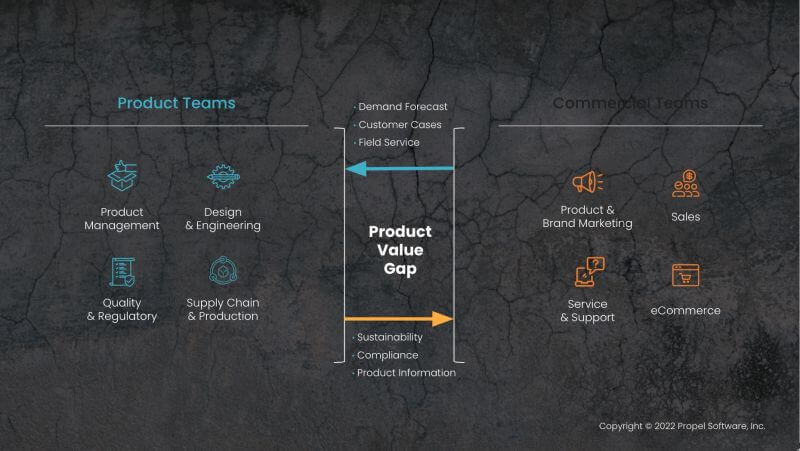 I had the chance to check in with Propel to get an update on their Product Value Management (PVM) strategy. I’m usually not a big fan of new acronyms, but they really are talking about something more than the current state of PLM. When I started researching PLM (two decades ago, yikes), I developed a comprehensive framework for what the solution could and should be. At the time, it was influenced quite a bit by consumer-oriented new product development (NPD) processes, where NPD needed to expand to NPDI (adding introduction). Few, if any, PLM vendors had that vision, and I would propose that none fully delivered on the promise. Propel is now realizing that vision. The key difference is filling what they call the “product value gap” between product and commercial teams. Propel’s strategy goes beyond what I envisioned, though, focusing on a comprehensive customer experience that spans products and product experiences. It includes three pillars: Defining the product, product operations, and market engagement. It fits the times and how consumers want to engage with products and companies. Propel is led by strategic, visionary thinkers, including Ray Hein, and has the strong support of Salesforce. Keep your eyes on them. If anyone can shake up the industry and move it beyond PLM to PVM it’s probably them. Thanks Tom Shoemaker for sharing the vision with me.
I had the chance to check in with Propel to get an update on their Product Value Management (PVM) strategy. I’m usually not a big fan of new acronyms, but they really are talking about something more than the current state of PLM. When I started researching PLM (two decades ago, yikes), I developed a comprehensive framework for what the solution could and should be. At the time, it was influenced quite a bit by consumer-oriented new product development (NPD) processes, where NPD needed to expand to NPDI (adding introduction). Few, if any, PLM vendors had that vision, and I would propose that none fully delivered on the promise. Propel is now realizing that vision. The key difference is filling what they call the “product value gap” between product and commercial teams. Propel’s strategy goes beyond what I envisioned, though, focusing on a comprehensive customer experience that spans products and product experiences. It includes three pillars: Defining the product, product operations, and market engagement. It fits the times and how consumers want to engage with products and companies. Propel is led by strategic, visionary thinkers, including Ray Hein, and has the strong support of Salesforce. Keep your eyes on them. If anyone can shake up the industry and move it beyond PLM to PVM it’s probably them. Thanks Tom Shoemaker for sharing the vision with me.


